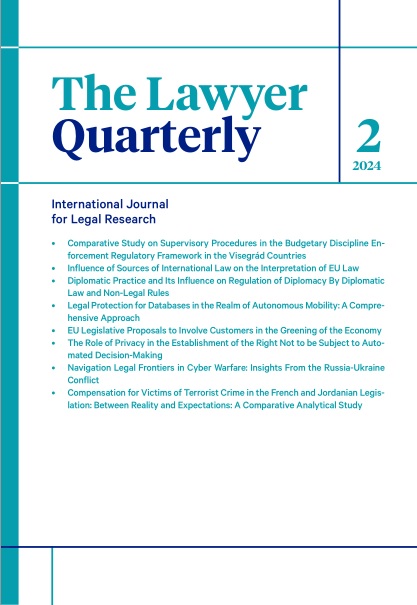NAVIGATING LEGAL FRONTIERS IN CYBER WARFARE: INSIGHTS FROM THE RUSSIA-UKRAINE CONFLICT
Main Article Content
Abstract
Cyberspaces can be significantly influenced by simple tools and tactics, and offer cost-effective
solutions for states to achieve their objectives. However, it can also be used for conducting cyberwarfare,
and its effects remain in gray areas. The spectrum of cyberwarfare activities ranges from minor web disruptions
to crippling attacks on critical national infrastructures. Nevertheless, cyberattacks present a
unique challenge in applying well-established humanitarian legal principles, particularly regarding the
distinction between civilian and military targets. This is because of the interconnectedness and shared infrastructure
of cyberspace between civilian and military entities, which blurs the lines between combatants
and civilian populations. This article seeks to shift the general perception of the problems associated with
this manner of conducting hostilities by building on the learning of the Russian-Ukrainian conflict. Furthermore,
the authors examine the cyber activities that occurred during the conflict and the legal and ethical
challenges that arise from classifying these activities and applying international law. They try to distinguish
cyber activities as an act of force or armed attack, with a focus on determining the criteria that
played a role in this classification, in light of Articles 2 (4) and 51 of the UN Charter. With reference to the
United Nations (UN) Charter and the principles of self-defence, the concept of attack is scrutinised. Furthermore,
the article addresses the principles of distinction and proportionality in relation to qualified
cyber activities as an armed attack in the same conflict, emphasising the importance of the principle of
proportionality in assessing cyber warfare.
Article Details
Copyright and originality of the offered manuscript
1. It is assumed that the manuscript offered has not been previously published. It is expected that the authors will inform the editorial board of TLQ if the entire manuscript, its parts or some relevant results have been previously published in a different publication at the level of an article in a reviewed scientific magazine or monograph. Should the editorial board of TLQ conclude that this condition was not fulfilled the review process may be terminated.
2. It is assumed that the submitted manuscript is an original academic work. If that is not the case the author needs to provide information regarding all circumstances that could raise doubts whether the manuscript is the outcome of original research.
3. By submitting the manuscript the author acknowledges that after the publication in The Lawyer Quarterly her/his work will be made available online to the Internet users and also kept by the Library of the Academy of Sciences of the Czech Republic. Author's rights to further use the work remain unabridged.

